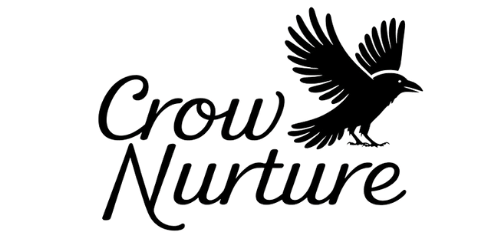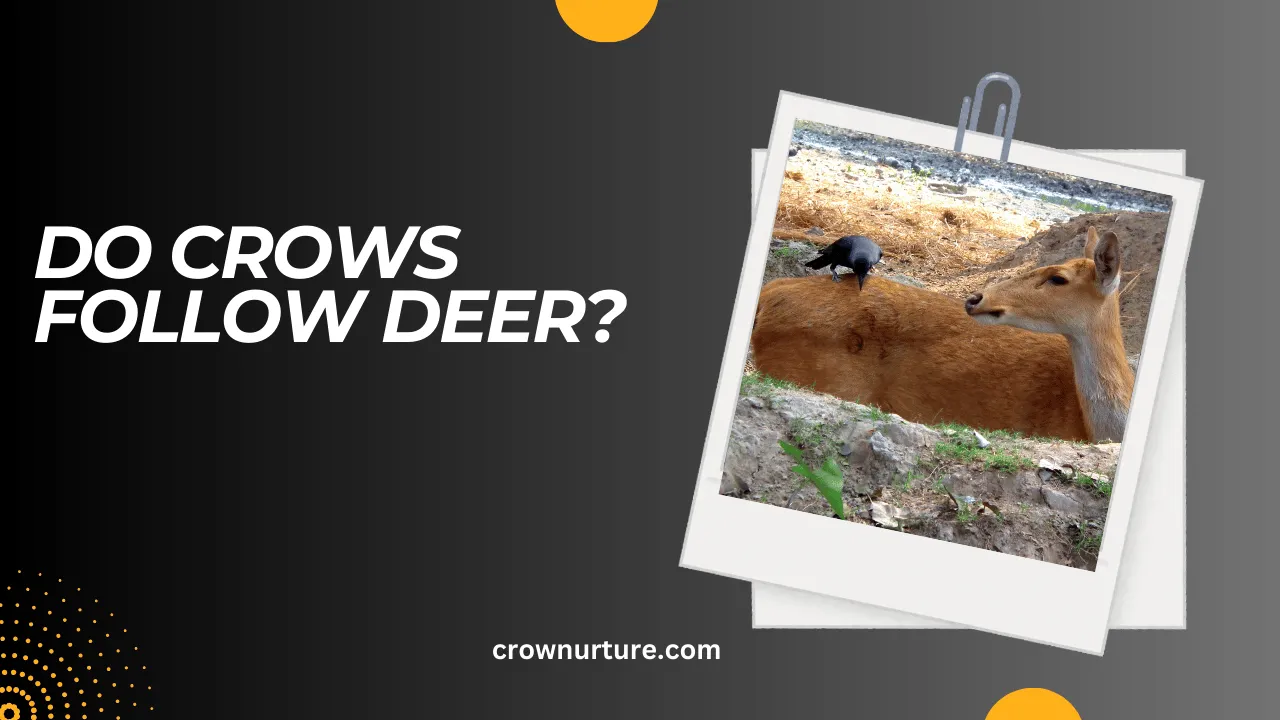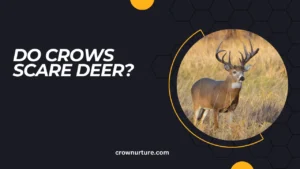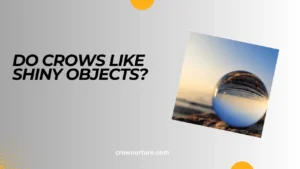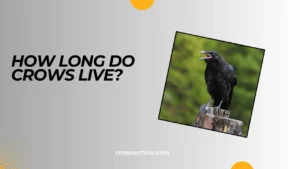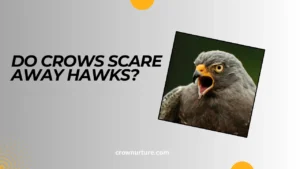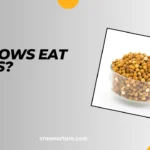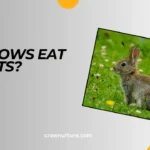Crows are among nature’s most intelligent and curious creatures, often observed in diverse habitats and alongside a variety of animals. One fascinating behavior that has caught the attention of many is their tendency to follow deer.
Whether in the forest, fields, or even urban parks, the sight of crows hovering near or perched close to deer is more common than you might expect. Why would a bird as resourceful as a crow take such a keen interest in deer?
Could it be the promise of food opportunities, or is there a deeper ecological connection at play? Understanding this behavior sheds light not only on the remarkable adaptability of crows but also on the intricate relationships between species in nature.
This blog explores the mysterious bond between crows and deer, uncovering the potential reasons for this interaction, the benefits it provides to each species, and the broader implications for our understanding of animal behavior. By the end, you’ll view this unique relationship with newfound appreciation and curiosity.
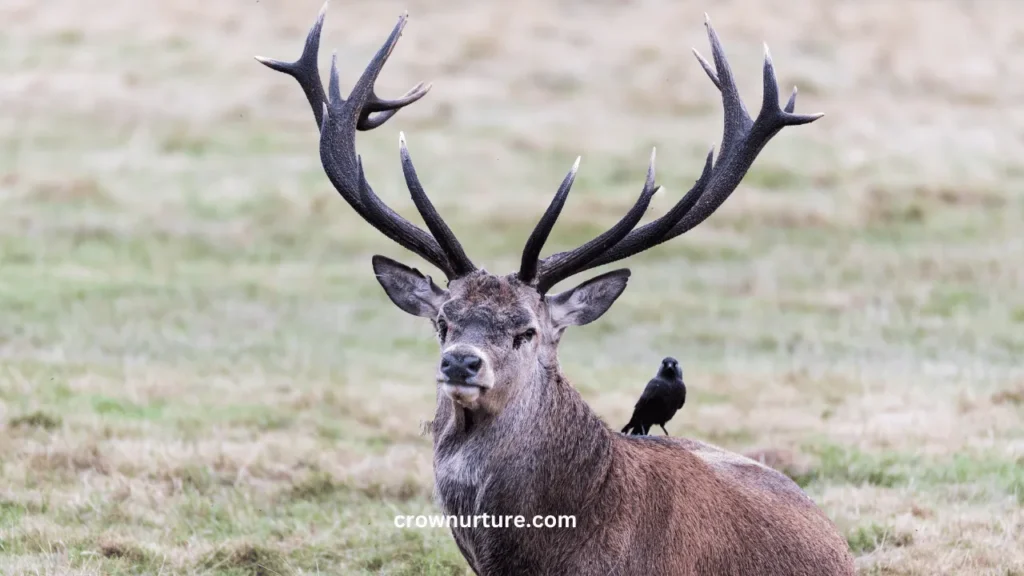
Contents
1. The Ecological Relationship
Crows and deer often share overlapping habitats, particularly in forests, grasslands, and suburban areas where human activity brings both species closer together. This shared environment naturally fosters interaction between the two animals.
Some researchers suggest their association may represent mutualism or commensalism, where one species benefits while the other remains unaffected. For instance, crows may gain access to food without impacting the deer.
The coexistence of these species underscores how animals adapt to one another in shared ecosystems, forming connections that can range from opportunistic to symbiotic.
2. Why Do Crows Follow Deer?
Crows are opportunistic feeders and often follow deer because their movement disturbs insects, seeds, or small mammals that crows can easily prey upon. The deer’s foraging or grazing can expose hidden food sources.
In some cases, crows may follow deer to scavenge on carcasses in areas with high deer populations or where deer roadkill is common. Their sharp senses and social behavior make them adept at spotting such opportunities.
Crows are also known for their observant nature, and their interactions with deer might stem from sheer curiosity or the chance to learn behaviors that could improve their survival.
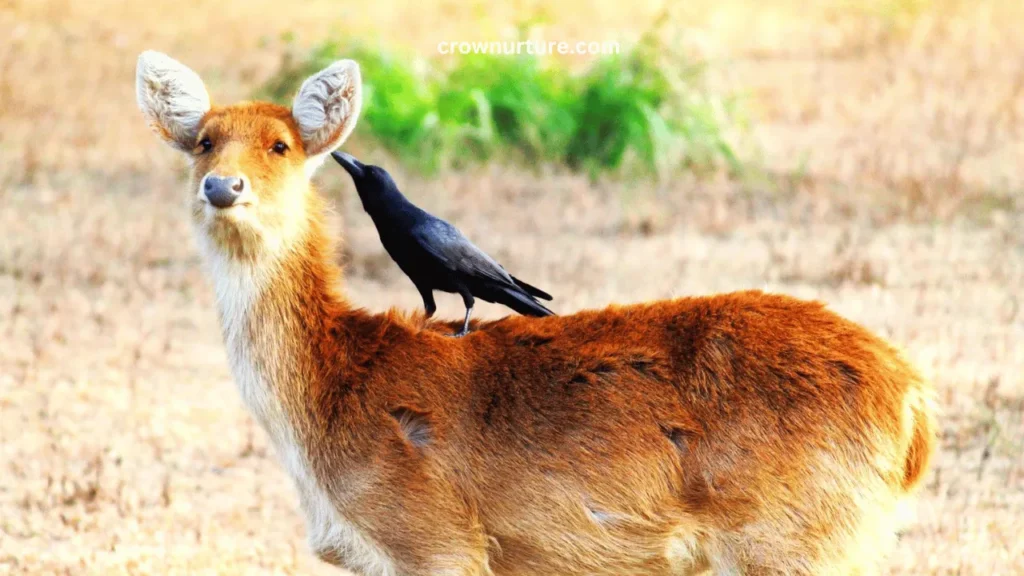
3. The Benefits for Crows
Deer can act as indirect providers of food, helping crows locate insects, small creatures, or fallen fruits. This association can be particularly beneficial during seasons when other food sources are scarce.
Crows may also use deer as a form of protection, relying on the deer’s larger size to detect predators or disturbances early. In this way, deer act as unwitting allies for the clever birds.
Additionally, crows are known for their social learning abilities, and observing deer might help them develop new foraging techniques or better understand their environment.
4. The Benefits for Deer
Interestingly, crows may offer some benefits to deer as well. By picking at ticks, flies, or other parasites on the deer’s coat, crows could help reduce their parasite load, much like oxpeckers on large mammals in Africa.
Crows’ sharp senses and noisy calls might also serve as an early warning system for deer, alerting them to potential threats like predators or human activity in the area.
Though these benefits are incidental, they highlight how interactions between species can often yield unexpected advantages.
5. Behavioral Observations and Anecdotal Evidence
Several field studies have noted crows perching on or following deer, especially during feeding times. Researchers hypothesize this behavior is driven by the crow’s constant search for food opportunities.
Citizen science observations and anecdotes from birdwatchers often report crows closely trailing deer herds or even picking at their fur. Such reports provide valuable insights into the patterns of this unique relationship.
These observations suggest that while crows are primarily interested in food, their interactions with deer may also be influenced by curiosity or other ecological factors.
6. Potential Drawbacks of the Relationship
While beneficial overall, there could be drawbacks. Crows and deer might face competition for food in areas where resources are limited, potentially leading to conflict.
Crows may also inadvertently disturb deer, especially during sensitive times like mating or fawning. Their loud calls or movements could stress deer or disrupt their behavior.
Despite these minor drawbacks, the relationship between crows and deer seems to be largely positive or neutral, driven by the opportunistic nature of crows.
Conclusion
The interactions between crows and deer are a testament to the complex relationships in the natural world. While crows primarily follow deer for food opportunities, their behavior may also reflect their intelligence and adaptability. Deer, in turn, benefit from reduced parasites and an additional layer of alertness.
This relationship highlights how species can influence each other’s survival in shared habitats. While more research is needed to fully understand the nuances of their interaction, one thing is clear: the partnership between crows and deer showcases the interconnectedness of ecosystems and the resourcefulness of nature’s most fascinating creatures.
FAQs
1. Do crows harm deer?
No, crows do not harm deer. Their interactions are generally harmless or beneficial to both species.
2. Why do crows follow deer?
Crows follow deer to access food, such as insects and seeds disturbed by the deer’s movement.
3. Do crows eat ticks off deer?
While not common, crows may occasionally pick ticks or other parasites off deer, providing some benefit to the deer.
4. Do crows warn deer of predators?
Crows’ loud calls can alert deer to potential threats, even if unintentionally, acting as an early warning system.
5. Are crows always around deer?
No, crows are not always around deer. Their interactions depend on food availability and habitat overlap.
6. Do crows eat deer meat?
Crows do not hunt deer but may scavenge on deer carcasses if the opportunity arises.
